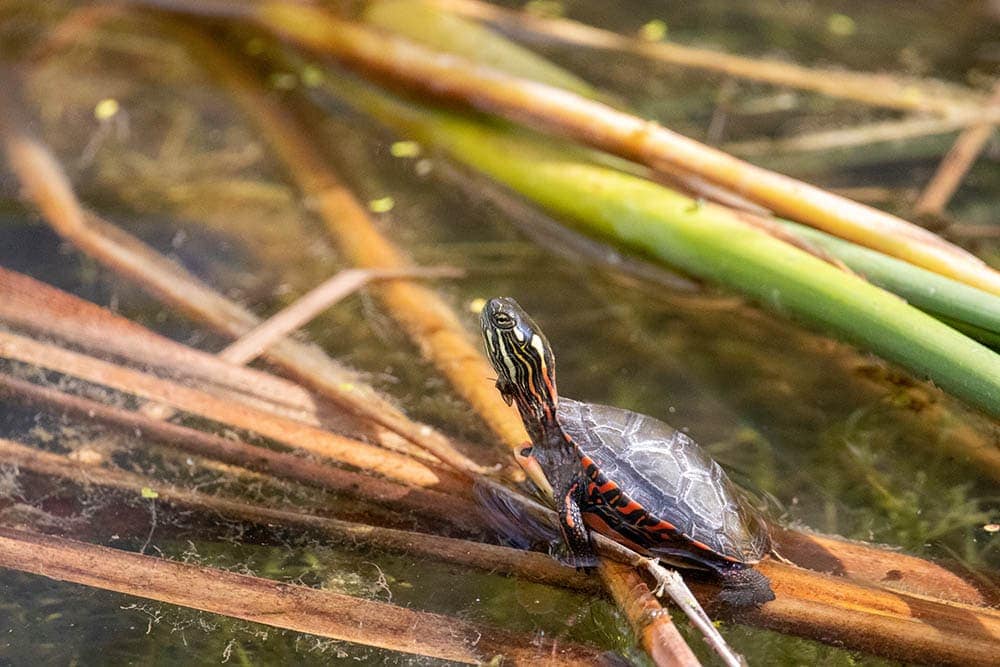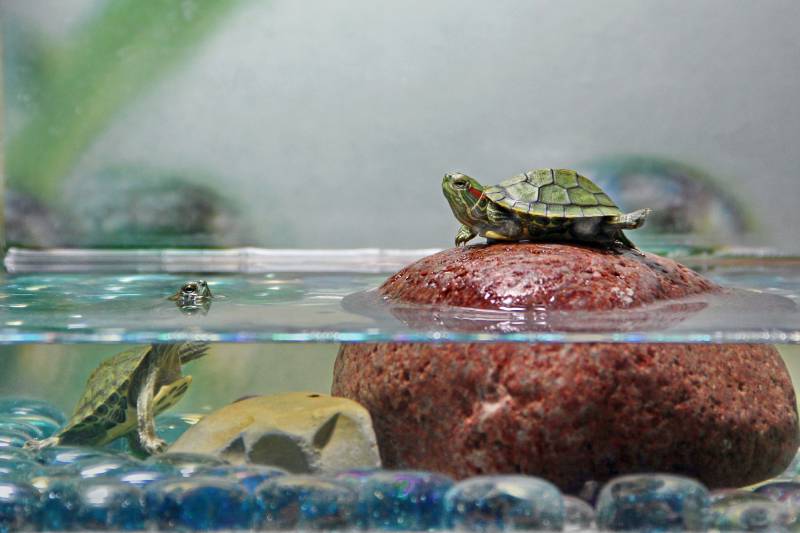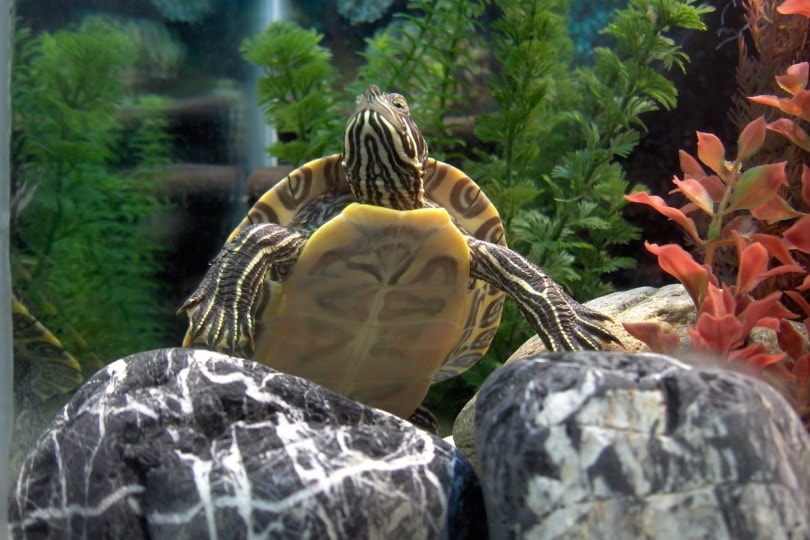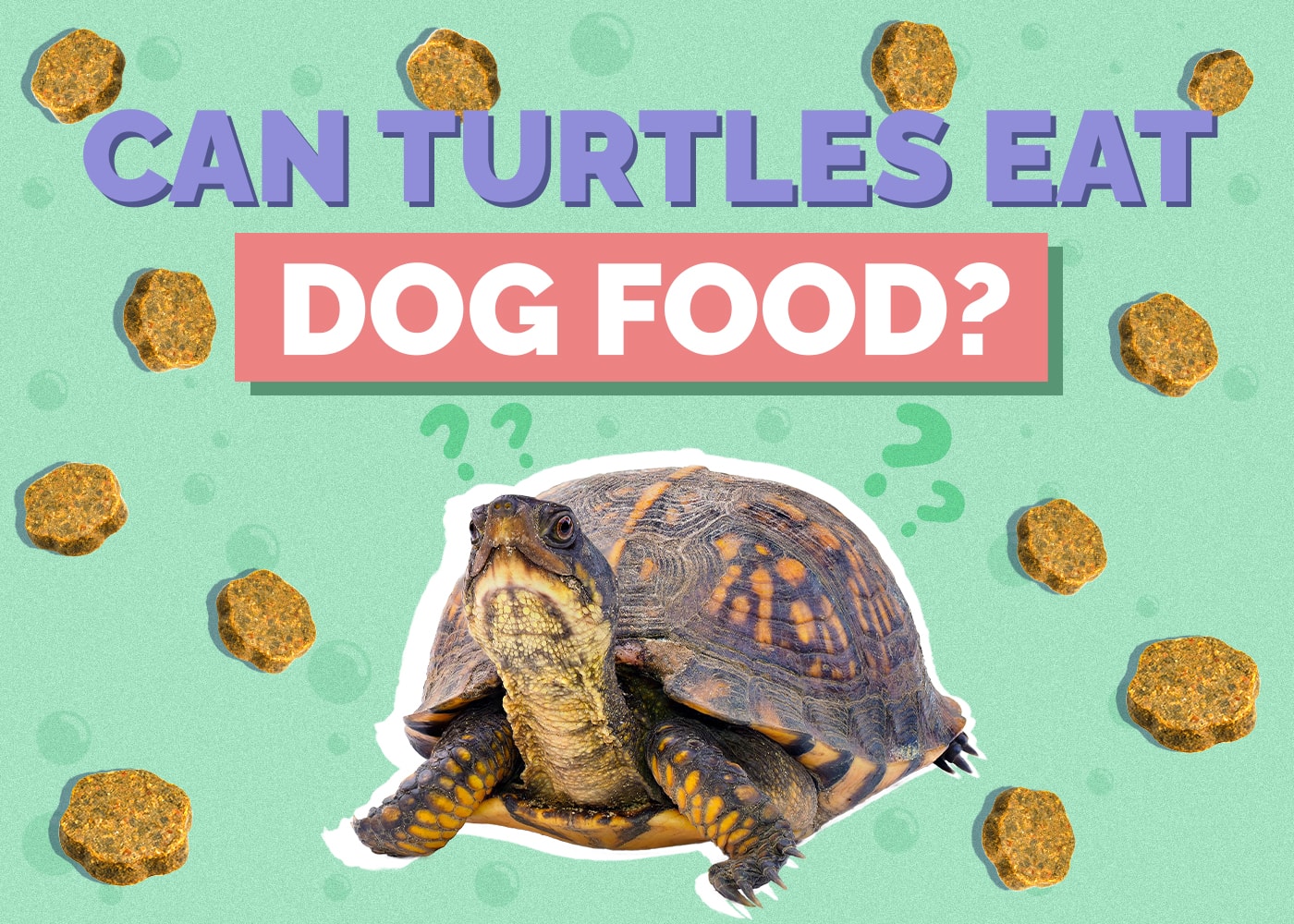What Do Baby Turtles Eat as Pets? Vet-Approved Options & FAQ
Updated on

Click to Skip Ahead
It is very important to check that it is legal to adopt a turtle species where you live. Keep in mind that in some countries there are laws prohibiting the adoption of turtles under a certain size. For example, FDA law in the US prohibits the sale of turtles with a shell length under 4 inches (10 cm)1.
Looking after a turtle comes with specific care and dietary requirements. However, there are a few differences when raising a baby turtle.
There are distinctions in what you feed a baby turtle compared to what you feed an adult. Looking at what baby turtles eat in the wild can guide you to a certain degree.
Wild baby turtles eat things like small fish, worms, snails, and insects, some of which you can feed your pet baby turtle.
Here, we cover what common turtle species eat as babies and what to look for when purchasing food and supplements to help your baby turtle grow into a healthy adult.
What Do Turtles Eat?
What you feed your turtle—baby or adult—depends on their species. Most baby turtles are carnivorous. Like many animal species, baby turtles need a large amount of protein to ensure healthy growth. When they are adults, they will add more vegetation to their diet. Some species turn into omnivorous when they grow up, which means that like humans, they eat both meat and plant material, including vegetables and fruits. The snapping turtle, Chelydra serpentina, will actually turn from carnivorous as a baby and juvenile to herbivorous as an adult. Most tortoises are herbivores, though some species will also eat meat.
Turtles can be found on every continent except Antarctica, and most live near bodies of water. Knowing more about the species of turtle that you own can help inform you on how to set up their habitat and how to feed them.
Since different turtles can have different diets, you need to know what your turtle would eat in the wild, and you can also check your pet store for species-specific turtle food.

Common Baby Turtle Diets
Let’s cover a few different diets of common turtles kept as pets.
1. Red-Eared Slider
The Red-Eared Slider is a popular semi-aquatic pet turtle. In the wild, they are commonly found in freshwater habitats, such as ponds, streams, lakes, rivers, and marshes. They are carnivores as babies and juveniles and eat an omnivorous diet as they become adults. This means they have a wide range of food sources of both plants and meat.

- Adult brine shrimp
- Earthworms, mealworms, and silkworms
- Small pond and apple snails
- Turtle pellets for Red-Eared Sliders
- Green lettuce
- Dandelion leaves
- Aquatic plants, including water lilies, water ferns, duckweed, and water hyacinth
- Bell peppers
- Carrots
- Daphnia
- Earthworms, mealworms, and silkworms
- Small pond and apple snails
- Turtle pellets for Red-Eared Sliders
Every day, Slider babies should be fed food that is high in protein. You can chop up and feed them one of the listed suggestions or use the turtle pellets made for Red-Eared Sliders. Adult should receive about 50% of their diet in protein and the other 50% in a variety of leafy greens and vegetables.
2. Box Turtle
The Box Turtle is a popular land turtle often mistaken for a tortoise. They are carnivorous as babies and juveniles and omnivorous as adults.

- Mealworms
- Tubifex worms
- Small crickets
- Nightcrawlers and earthworms
- Mealworms
- Bell peppers
- Broccoli
- Tubifex worms
- Small crickets
- Nightcrawlers and earthworms
- Tomatoes
- Bananas, melons, and apricots as special treats
Box Turtle hatchlings only need feeding once every day during their first weeks of life. Later, you can begin to skip a few days or feed them every other day, depending on your observations. Unlike other species, turtles are great at self-regulating their ingest, but developing turtles will need regular access to food. You can offer plants in addition to meat, but they will likely reject it.
Getting turtles used to eating a variety of food when they’re young is vital to avoid neophobias and nutritional issues in the future. So, once they reach the juvenile state, offering them greens, vegetables, and fruits is necessary. Finely chop up large foods, mix in different ingredients, and place the food in their habitat. Ensure that you regularly remove anything uneaten.

How to Feed Aquatic Turtles
Hatchlings and juvenile aquatic turtles should be fed every day, but as adults, they only need to get fed about two to three times a week.
Most turtle owners feed their freshwater turtles in a separate tank rather than in their main tank. This includes Red Ear Sliders, Soft-Shelled Turtles, and Snapping Turtles. This prevents the food from affecting the water quality and sinking to the bottom. Aquatic baby turtles tend to be sloppy eaters and will relieve themselves while eating, both of which would soil their main tank.
Hatchling and juvenile semi-aquatic turtles can be given food on a shallow plate or rock, or you can sprinkle pellets on top of the water. Aim to feed them around mid-morning, which gives them time to wake up and warm up.
Turtles should be given vitamin supplements, with an emphasis on vitamin D3, which helps with shell development. You should also ensure that they spend time in sunlight for natural vitamin D3. Adequate levels of calcium are vital for these species, so adding a cuttlebone or calcium rock twice a week is highly recommended.

What If They Are Not Eating?
How long a turtle can go without eating depends on their stored fat reserves. If your hatchling doesn’t seem too eager to eat, get them tasty proteins like mealworms, crickets, and beetles. If your older turtle isn’t eating, it is best to check their enclosure temperature and humidity, as the ambient temperature can affect their metabolism.
If your turtle isn’t eating, it is best to take them to an exotic vet for a complete checkup. They will check for infections, parasites, foreign body ingestion, impactions, or vitamin decencies. After treatment, your turtle should hopefully return to their usual self.
Conclusion
If you’re unsure what to feed your baby turtle, speak to your vet. They can let you know what to feed them, how to prepare the food, and how often you should feed them.
Baby turtles need a high-protein diet and will start eating more vegetation as they mature. You can find most of the food that you’re looking for in pet stores, even live food like crickets and mealworms.
As long as you do the research and consult with your vet, it shouldn’t be difficult to feed your baby turtle. You will get to enjoy raising your turtle from a small baby to a mature adult.
Featured Image Credit: Danusa Hansmann Leite, Shutterstock












